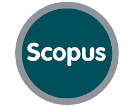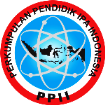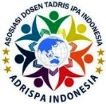Design of TPACK Based PBL Student Worksheet to Enhance Creative Thinking Skills
Abstract
This study aimed to develop a Problem-Based Learning (PBL) Student Worksheet (LKPD) based on the Technological, Pedagogical, and Content Knowledge (TPACK) framework to enhance students’ creative thinking skills in the topic of reaction rates. The designed LKPD is intended to provide a challenging and meaningful learning experience, fostering students’ critical and creative problem-solving abilities in the context of reaction rate concepts. The PBL approach facilitates active student engagement, while the TPACK framework ensures the integration of technology, pedagogy, and content knowledge in the learning process. The research employed the 4D development model, focusing on the Define, Design, and Develop (expert validation) stages. Data for the Define stage were collected from a Chemistry teacher and Grade XI students at SMA Ta’miriyah Surabaya to conduct a needs analysis. Descriptive qualitative analysis was applied to examine the needs analysis outcomes and the LKPD design blueprint. The results indicate that the developed LKPD possesses a clear structure and is highly relevant for fostering students’ creative thinking skills. Expert validators classified the LKPD as “Highly Valid.” In conclusion, the developed LKPD is feasible as a contextual learning resource and has strong potential to enhance students’ creative thinking skills in integrated science learning.
Keywords: student worksheet, problem based learning, TPACK, creative thinkingFull Text:
PDFReferences
Arends, Richard I. (2018). Learning to Teach: Belajar untuk Mengajar. Yogyakarta: Pustaka Pelajar.
Barrows, H.S. (1996) . Problem-based learning in medicine and beyond: a brief overview. New Dir. Teach. Learn. 1996 (68), 3–12. https://doi.org/10.1002/tl.37219966804.
Bridges, E.M., Hallinger, P.,with ERIC Clearinghouse on Educational Management. (1995) . Implementing problem based learning in leadership development. In: ERIC Clearinghouse on Educational Management. University of Oregon.
Filsaime, D. K. (2008). Mengembangkan kreativitas dalam pembelajaran sains. Kencana Prenada Media Group
Funa, A.A., Prudente, M.S., (2021). Effectiveness of problem-based learning on secondary students’ achievement in science: a meta-analysis. Int. J. Instr. 14 (4), 69–84. https://doi.org/10.29333/iji.2021.1445a.
Hardanti, P., Murtinugraha, R. E., & Arthur, R. (2024). Studi literatur: Pemanfaatan pendekatan TPACK (Technological, Pedagogical, and Content Knowledge) pada pengembangan e-modul pembelajaran. Jurnal Teknologi Pendidikan, 1(3).
Hew KF, Lan M, Tang Y, Jia C, Lo CK. (2019). Where is the ‘theory’ within the field of educational technology research? Br J Educ Technol ,50(3):956–71. https:// doi.org/10.1111/bjet.12770. scientific critical thinking in science education. Thinking Skills and Creativity, 55, 101695. https://doi.org/https://doi.org/10.1016/j.tsc.2024.101695
Khairunnisa, & Sudrajat, A. (2023). Pengembangan Instrumen Tes Diagnostik Five-Tier untuk Mengidentifikasi Miskonsepsi Siswa Kelas XI pada Materi Laju Reaksi. PENDIPA Journal of Science Education, 7(2), 127-136.
Musya’idah, Effendy, & Santoso. (2016). Prosiding Seminar Nasional Pendidikan IPA Pascasarjana UM, (pp. POGIL, Analogi Model FAR, KBI, dan Laju Reaksi). Malang.
Niederhauser DS, Lindstrom DL. (2018). Instructional technology integration models and frameworks: diffusion, competencies, attitudes, and dispositions. In: Voogt J, Knezek G, Christensen R, Lai KW, editors. Handbook of information technology in primary and secondary education. Springer International Publishing, p. 1–21. https://doi.org/10.1007/978-3-319-53803-7_23-1
Ngereja, B., Hussein, B., Andersen, B., (2020). Does project-based learning (PBL) promote student learning? A performance evaluation. Educ. Sci. 10 (11), 330. https://doi.org/10.3390/educsci10110330
Mishra P, Koehler MJ. (2006). Technological pedagogical content knowledge: a framework for teacher knowledge. Teach Coll Rec , 108(6):1017–54. https://doi.org/10.1111/j.1467-9620.2006.00684.x
Riduwan. (2016). Skala Pengukuran Variabel-variabel penelitian. Bandung: Alfabeta.
Rocke, A. J. (2020). Chemistry Encyclopedia Britannica.
Savery, J.R., (2006). Overview of problem-based learning: definitions and distinctions. Interdiscip. J. Probl.-Based Learn. 1 (1). https://doi.org/10.7771/1541-5015.1002
Shulman L. (1986). Those who understand: knowledge growth in teaching. Educ Res, 15(2):4–14. https://doi.org/10.2307/1175860
Sugiyono. (2015). Metode Penelitian Kuantitatif, Kualitatif, dan R&D. Bandung : ALFABETA.
Syahidah. Fitya, Hardi. Endang, Sutresna. Yoyon. (2023) Pengaruh Penerapan Model Pembelajaran Mind Mapping Berbasis Tpack Terhadap Kemampuan Berpikir Kreatif Siswa. Jurnal keguruan dan ilmu Pendidikan. Vol 4, No 1
Thiagarajan, Sivasailam, dkk. (1974). Instructional Development for Training Teachers of Exceptional Children. Washinton DC: National Center for Improvement Educational System
Uluçınar, U., (2023). The effect of problem-based learning in science education on academic achievement: a meta-analytical study. Sci. Educ. Int. 34 (2), 72–85. https://www.icaseonline.net/journal/index.php/sei/article/view/505
DOI: http://dx.doi.org/10.24014/jnsi.v8i2.35244
Refbacks
- There are currently no refbacks.

Journal of Natural Science and Integration
E-ISSN: 2620-5092 P-ISSN: 2620-4967
Published By:
Department of Science Education, Faculty of Education and Teacher Training,
State Islamic University of Sultan Syarif Kasim Riau, Indonesia
Mailing Address:
Jl. H.R Soebrantas Km. 15 No. 155
Kelurahan Simpang Baru
Kecamatan Tuah Madani, Pekanbaru, Riau, Indonesia
Email: jnsi.tadrisipa@uin-suska.ac.id
Indexed By:
Journal of Natural Science and Integration is licensed under a Creative Commons Attribution 4.0 International License.


_-_Copyy2.png)






.jpg)
.png)
.jpg)
.jpg)




